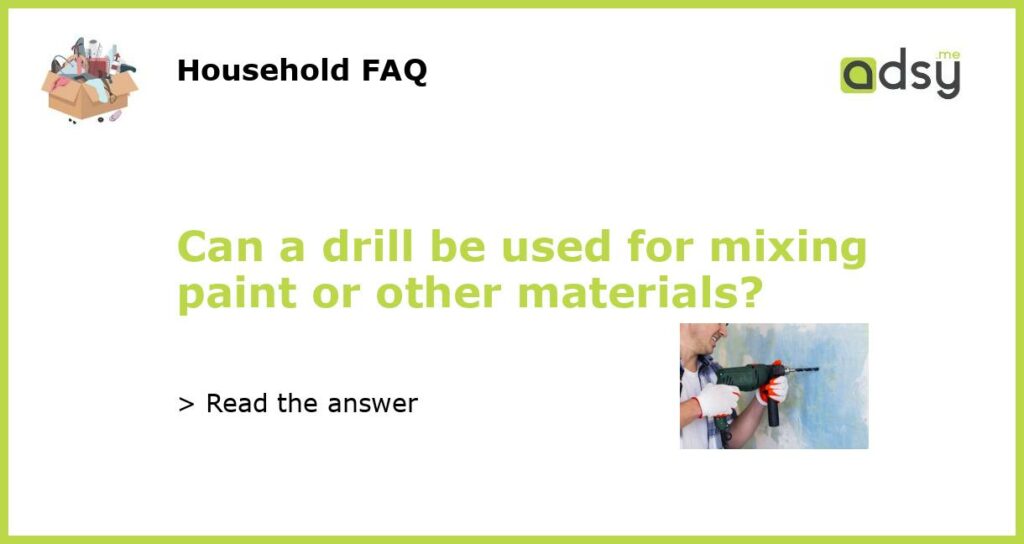Yes, a drill can be used for mixing paint or other materials
A drill is a versatile tool that can be used for various purposes, including mixing paint or other materials. While it is commonly associated with drilling holes or driving screws, drills can also be equipped with mixing attachments to effectively blend substances.
Mixing paint with a drill
If you have a large amount of paint to mix, using a drill can save you time and effort. Instead of manually stirring the paint with a stick or brush, a drill with a mixing attachment can quickly and evenly mix the paint, ensuring a consistent texture and color.
To mix paint with a drill, you will need a mixing paddle attachment specifically designed for this purpose. These attachments typically have a spiral shape and are made from durable materials such as metal or heavy-duty plastic. They are designed to be attached to the chuck of the drill, allowing the paddle to spin and mix the paint.
When using a drill to mix paint, it is important to start at a slow speed to avoid splattering. Gradually increase the speed as the paint begins to mix, but be careful not to overmix or introduce air bubbles into the paint. It is also advisable to use a drill with variable speed settings to have better control over the mixing process.
Mixing other materials with a drill
In addition to paint, a drill can also be used to mix other materials, such as concrete, mortar, adhesives, or grout. Similar to mixing paint, you will need a specific attachment for each material to ensure effective blending.
For concrete or mortar, a mixing paddle with a helical design is suitable. This type of attachment is designed to break up lumps and mix the materials thoroughly. Some mixing paddles also feature holes or slots to enhance the mixing action.
When mixing adhesives or grout, a paddle attachment with a flat or rectangular shape is typically used. This allows for better distribution and blending of the materials, ensuring a consistent and smooth mixture.
Benefits of using a drill for mixing
Using a drill for mixing paint or other materials offers several benefits:
1. Time and effort-saving: Mixing paint or other materials manually can be time-consuming and physically demanding. By using a drill with a mixing attachment, the process is significantly faster and requires less effort.
2. Consistency: Mixing with a drill ensures a consistent texture and color, eliminating the risk of uneven distribution or lumps in the mixture.
3. Versatility: A drill can be used for a wide range of mixing tasks, making it a versatile tool for various projects or applications.
4. Control: Using a drill with variable speed settings allows for precise control over the mixing process, ensuring optimal results.
5. Durability: Mixing attachments for drills are typically made from durable materials, designed to withstand the rigors of mixing tough substances.
Safety precautions when using a drill for mixing
While using a drill for mixing can be efficient and convenient, it is important to observe safety precautions:
1. Wear safety goggles to protect your eyes from splatters or debris.
2. Use the appropriate mixing attachment for the material you are working with to ensure proper mixing and prevent damage to the tool.
3. Securely attach the mixing paddle to the drill chuck, ensuring it is properly tightened.
4. Start the drill at a slow speed and gradually increase as the mixing process progresses.
5. Avoid overmixing or introducing excessive air bubbles into the mixture.
By following these precautions, you can safely and effectively use a drill for mixing paint or other materials, saving time and effort in various projects.






